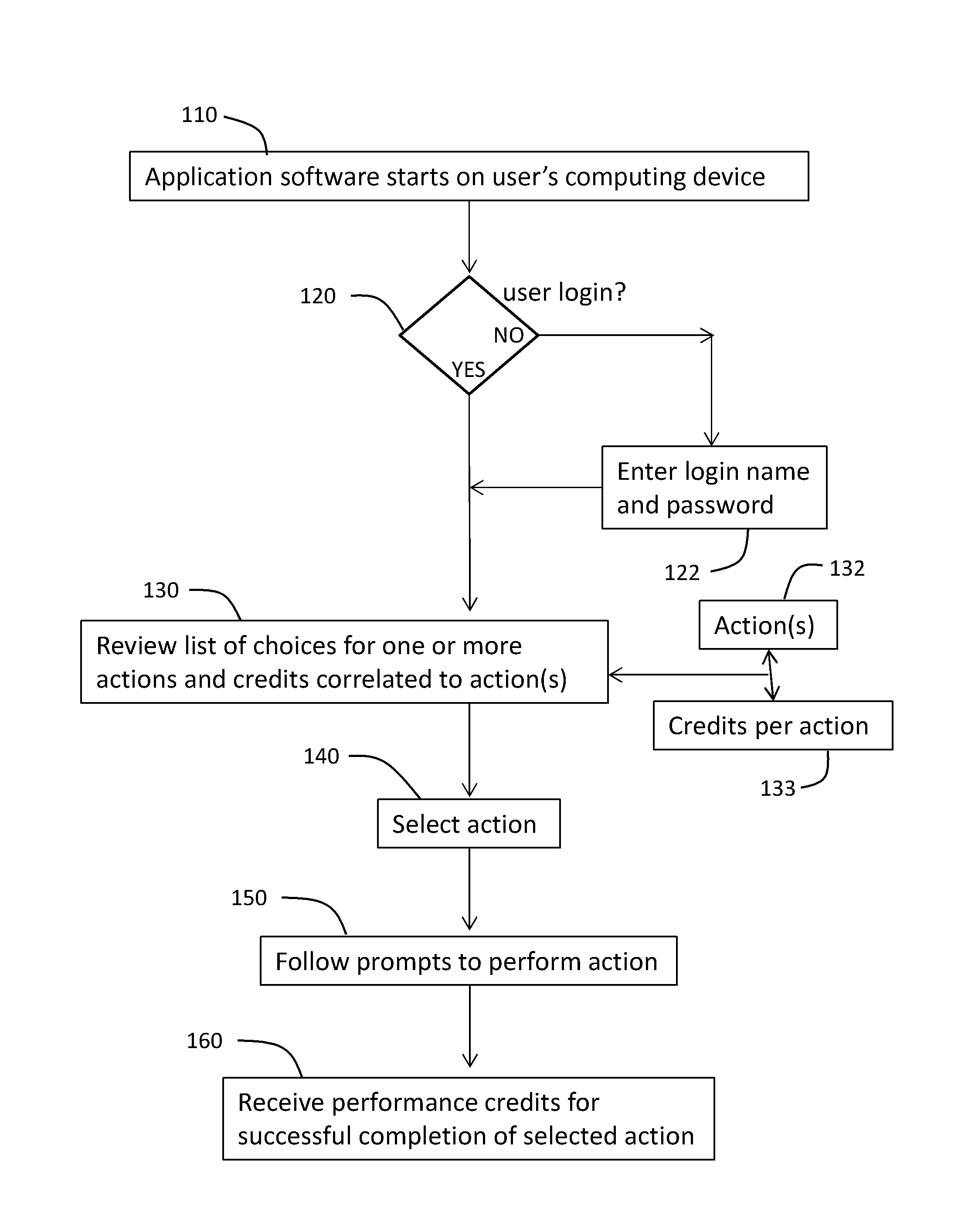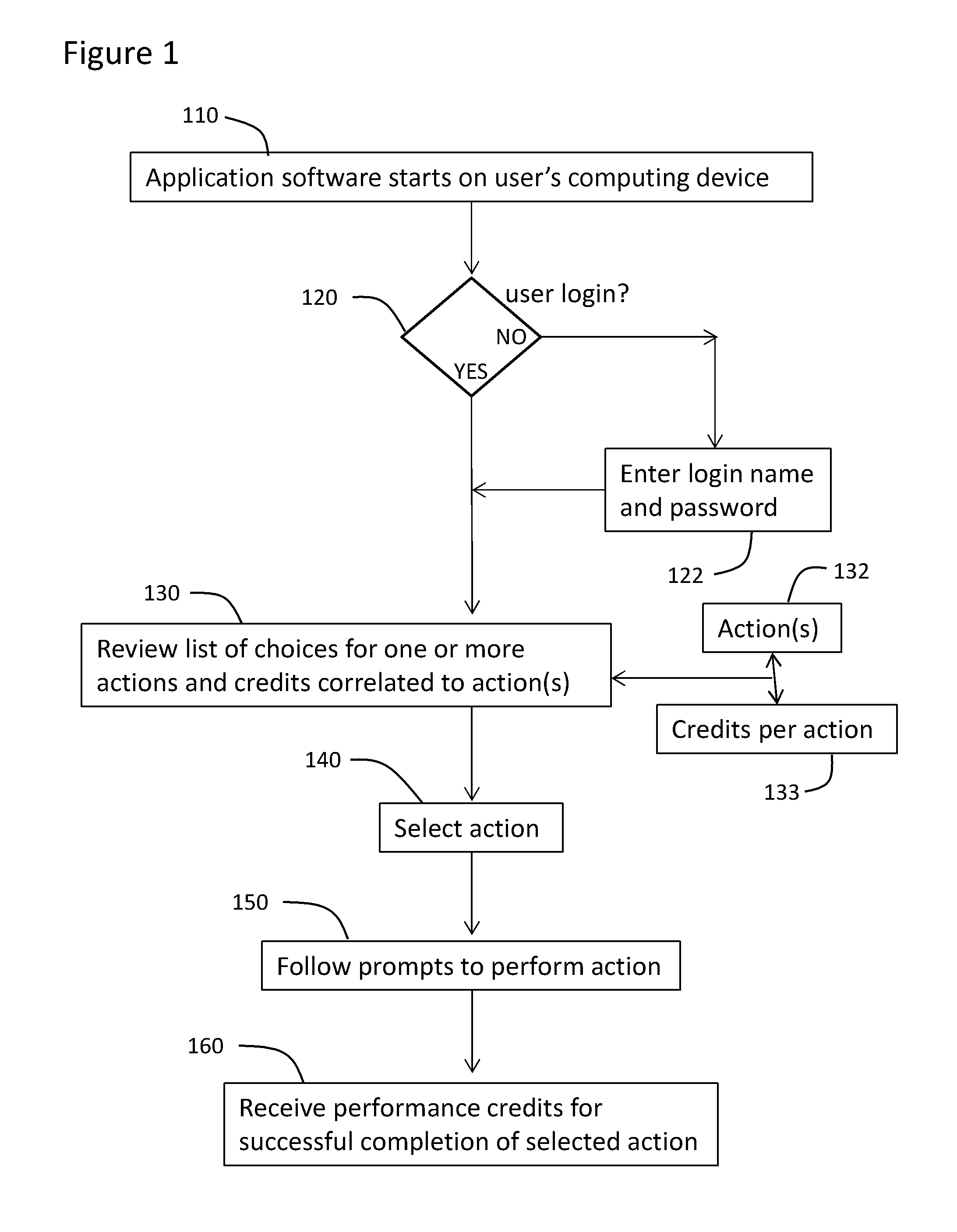Scalable networked computing system for scoring user influence in an internet-based social network
a social network and user influence technology, applied in the field of scalable networked computing systems, can solve the problems of not being able to easily scale up, not being able to readily accommodate the redemption of points, and not yet widely adopted as a referral reward system for computer network mediated marketing purposes
- Summary
- Abstract
- Description
- Claims
- Application Information
AI Technical Summary
Benefits of technology
Problems solved by technology
Method used
Image
Examples
example 1
[0126]Let's consider that at closing of a campaign for brand XYZ, user has performed 7 activities of 3 different types: 3 Facebook (FB) status, 3 Instagram posts and 1 FB video. After calculating Viral_Factor_Activity for each single activity and scaling their default values by the computed factors, the Activity_Value's are as follow:
[0127][2.3, 6.1, 2.7, 8.1, 3.5, 3.7, 5.7]
[0128]So
[0129]User_Value_Campaign_SN for Instagram is 8.1+3.5+3.7=14.3
[0130]And the corresponding value for FB is 2.3+6.1+2.7+5.7=16.8
example 2
[0131]If for campaign A, user performs 3 posts, 5 images and one video on Facebook (FB) and 2 tweets on Twitter, then the score for the user is:
User_Campaign_SN for FB=3×1.5+5×2.5+15=4.5+12.5+5=22
User_Campaign_SN for Twitter=2×2.2=4.4
[0132]Activity_Value
[0133]Activity_Value is the value added to the network by a single activity during each campaign. There are two parameters involved in determining Activity_Value. The Default_Value_Activity which depends on the type of activity and is calculated and stored in database before running each campaign. Viral_Factor_Activity serves as an inflation factor that captures the influence made by this single activity on the network. The following formula is used to calculate Activity_Value
Activity_Value=Viral_Factor_Activity×Default_Value_Activity
[0134]Viral_Factor_Activity
[0135]Viral_Factor_Activity indicates the gain each individual activity can get from network through engagement and participation encouraged by that activity. This gain is real...
example 3
[0141]For each event, IDs for the original publisher and the references to the previous users, if there are any, are trached and stored. Credit is given to the original poster right away and the reference's first order and second order avalanches lists are updated. In this example, only two levels of references, ref1 and ref2, are tracked and stored.
User IDEvent IDContentTimeRef1Ref22079477183903786020017:23:10,3733821900NA2014-08-05
[0142]So the record for the User 3733821900 is updated:
First OrderSecond OrderUser IDEvent IDTimeAvalancheAvalanche3733821900903786020017:23:10,102014-08-05
[0143]First_Order_Avalanche_Coefficient
[0144]First_Order_Avalanche_Coefficient (α) is the propagation factor for a single activity of a user on the social graph through his / her first order friends (direct neighbor nodes; second order nodes). It is a reflective factor for each social activity which determines the first layer engagement on a social graph.
α=α121+α02+α12+α22×110×First_Order_Avalanche
[0145...
PUM
 Login to View More
Login to View More Abstract
Description
Claims
Application Information
 Login to View More
Login to View More - R&D
- Intellectual Property
- Life Sciences
- Materials
- Tech Scout
- Unparalleled Data Quality
- Higher Quality Content
- 60% Fewer Hallucinations
Browse by: Latest US Patents, China's latest patents, Technical Efficacy Thesaurus, Application Domain, Technology Topic, Popular Technical Reports.
© 2025 PatSnap. All rights reserved.Legal|Privacy policy|Modern Slavery Act Transparency Statement|Sitemap|About US| Contact US: help@patsnap.com



